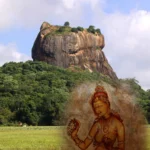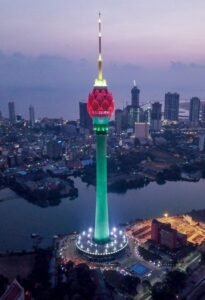Sri Lanka, with its diverse landscapes ranging from tropical rainforests to rugged mountains, offers some of the best hiking and trekking trails in South Asia. Whether you are an avid trekker or someone seeking a peaceful walk in nature, Sri Lanka has something for everyone. From stunning mountain peaks and cloud forests to waterfalls and tea plantations, Sri Lanka’s trekking trails offer unparalleled natural beauty and a chance to experience the island’s rich biodiversity up close.
In this guide, we’ll take you through the best hiking and trekking trails in Sri Lanka and show you how Tranz Ceylon Tours & Travels can help you plan your adventure, ensuring a seamless and memorable trekking experience.
1. Adam’s Peak – A Sacred Pilgrimage and Stunning Views
Location: Central Sri Lanka
Difficulty: Moderate to challenging
Best Time to Visit: December to May
Adam’s Peak (Sri Pada) is one of Sri Lanka’s most sacred mountains and a popular trekking destination. The trail is famous for the sacred footprint, believed to be that of the Buddha, and is a significant pilgrimage site for Buddhists, Hindus, Muslims, and Christians alike. The hike to the summit takes about 3 to 4 hours, and while it can be challenging, the view from the top at sunrise is worth the effort. On clear days, you can see as far as the ocean.
Why Hike:
- Spiritual Significance: Climb one of Sri Lanka’s most revered peaks.
- Breathtaking Views: Witness stunning panoramic views of the island.
- Cultural Experience: A chance to experience a spiritual pilgrimage.
Tip: Start the hike early in the morning to enjoy the sunrise from the top. Tranz Ceylon Tours & Travels can arrange for guided tours and help you with transportation to the starting point.
2. Horton Plains – World’s End and Beyond
Location: Central Highlands
Difficulty: Easy to moderate
Best Time to Visit: December to April
The Horton Plains National Park is one of the most popular trekking spots in Sri Lanka. The World’s End hike, a 9km loop, takes you through the park’s dense forests, grassy plains, and past picturesque waterfalls. The highlight of the trek is reaching World’s End, a steep cliff with a drop of nearly 1,000 meters that offers breathtaking views of the surrounding valley. The trek also includes stops at Baker’s Falls, a stunning waterfall along the trail.
Why Hike:
- Stunning Views: Enjoy panoramic views from World’s End.
- Flora and Fauna: Spot endemic wildlife like sambar deer, purple-faced langurs, and various bird species.
- Easy Access: The trail is relatively easy and perfect for families or casual hikers.
Tip: Make sure to bring a jacket as the weather can be cold, especially in the early mornings. Book a guided tour with Tranz Ceylon Tours & Travels to ensure you don’t miss any key spots along the trail.
3. Knuckles Mountain Range – A Trekker’s Paradise
Location: Central Sri Lanka
Difficulty: Moderate to challenging
Best Time to Visit: March to September
The Knuckles Mountain Range is a hidden gem in Sri Lanka, offering diverse trekking experiences. The area is known for its rugged peaks, cloud forests, and remote villages. There are multiple trekking routes, ranging from short hikes to multi-day expeditions. The trek to the summit of Knuckles Peak is one of the most challenging and rewarding, providing a panoramic view of the central highlands and the Mahaweli River.
Why Hike:
- Scenic Beauty: Trek through cloud forests, picturesque tea plantations, and waterfalls.
- Off the Beaten Path: Enjoy a quieter, more remote experience compared to other trails in Sri Lanka.
- Diverse Ecosystems: Explore varied ecosystems with rich biodiversity.
Tip: The Knuckles Range is remote and can be difficult to navigate without a guide. Consider booking a guided trekking tour with Tranz Ceylon Tours & Travels for a safe and enriching experience.
4. Ella Rock – A Rewarding Hill Country Hike
Location: Ella, Southern Sri Lanka
Difficulty: Moderate
Best Time to Visit: December to March
The Ella Rock hike is one of the most popular treks in Sri Lanka’s hill country. The trail offers breathtaking views of the surrounding valleys, tea plantations, and the Adisham Bungalow. The hike starts from the town of Ella and ascends through dense jungle, leading you to an amazing viewpoint at the summit. You can also explore nearby attractions like Ravana Falls and the Nine Arches Bridge.
Why Hike:
- Panoramic Views: Experience sweeping views of the hill country and tea plantations.
- Easy Access: A relatively short hike with great rewards.
- Adventure and Beauty: A perfect combination of adventure and stunning scenery.
Tip: Be prepared for a steep climb toward the top. For a more comfortable experience, Tranz Ceylon Tours & Travels can provide a guide and transportation to and from the hike.
5. The Belihuloya Trek – Nature and Waterfalls
Location: Southern Sri Lanka
Difficulty: Moderate
Best Time to Visit: April to September
The Belihuloya trek is a hidden gem for nature lovers. The area is known for its dense forests, waterfalls, and clear, cool streams. One of the most popular trails here is the trek to the Diyaluma Falls, Sri Lanka’s second-highest waterfall, which offers spectacular views from the top. The trek involves a combination of forest trails, streams, and rocky paths, making it an exciting and scenic adventure.
Why Hike:
- Waterfalls: Visit Diyaluma Falls, one of the tallest waterfalls in Sri Lanka.
- Serene Environment: Explore the untouched wilderness of Belihuloya, which is less crowded than other popular hiking destinations.
- Biodiversity: See a variety of wildlife and plants unique to the region.
Tip: The trek can be a bit challenging, so bring sturdy footwear and plenty of water. Tranz Ceylon Tours & Travels can organize this hike for you, complete with a knowledgeable guide.
Experience Sri Lanka’s Best Treks with Tranz Ceylon Tours & Travels
Sri Lanka’s hiking and trekking trails offer a unique way to experience the island’s natural beauty, biodiversity, and cultural heritage. Whether you’re conquering the heights of Adam’s Peak, exploring the forests of Horton Plains, or trekking through the remote Knuckles Range, Tranz Ceylon Tours & Travels ensures a comfortable, guided, and safe journey.
Why Choose Tranz Ceylon Tours & Travels?
- Tailored Treks: We offer customized trekking itineraries to suit your preferences and fitness level.
- Expert Guides: Our experienced guides will provide in-depth knowledge of the areas you explore, ensuring you make the most of your trek.
- Seamless Service: From transport and accommodation to safety and expert guidance, we take care of all the details.
Book your trek with Tranz Ceylon Tours & Travels and experience Sri Lanka’s stunning landscapes like never before!











